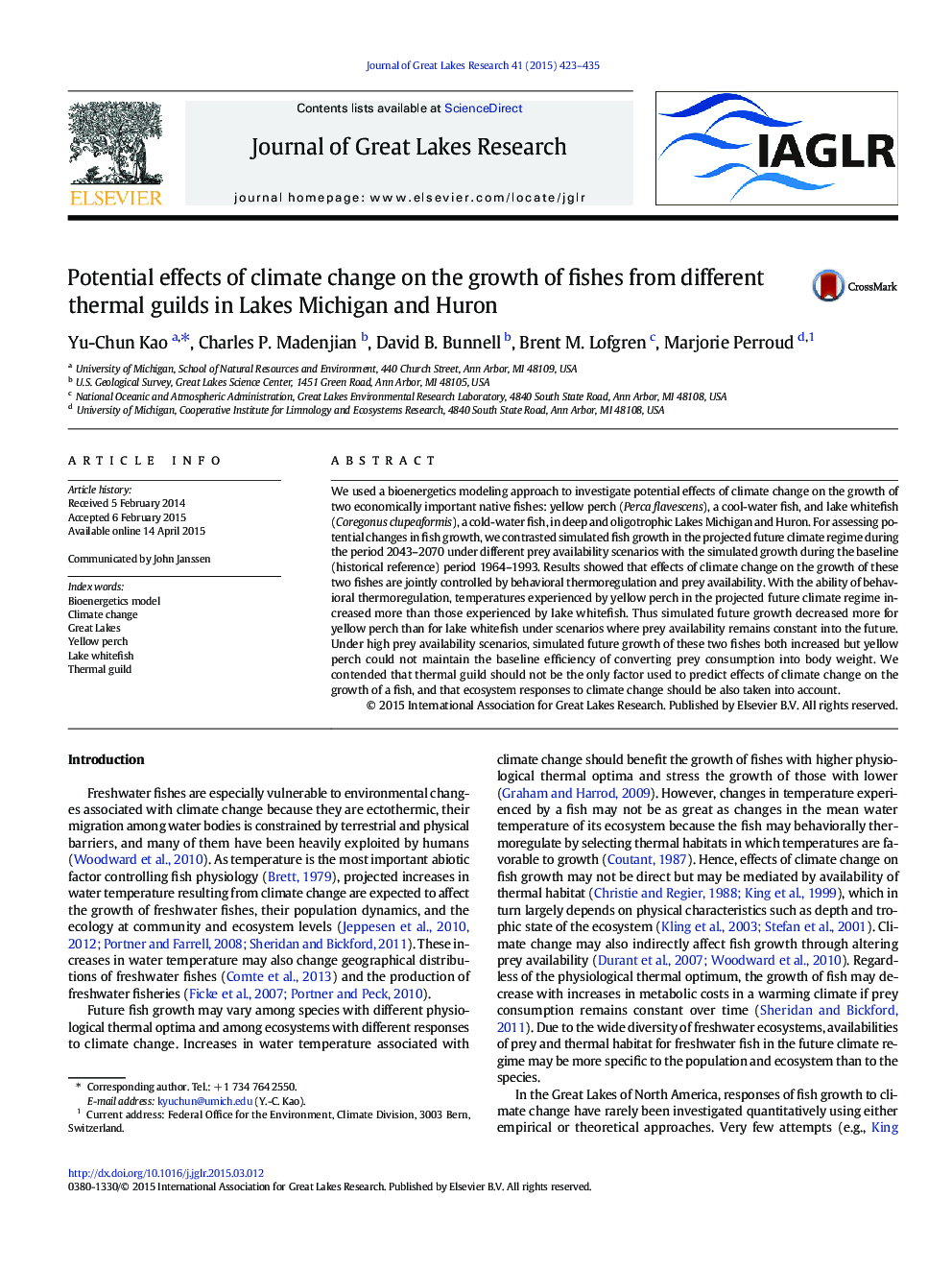| Article ID | Journal | Published Year | Pages | File Type |
|---|---|---|---|---|
| 6305005 | Journal of Great Lakes Research | 2015 | 13 Pages |
Abstract
We used a bioenergetics modeling approach to investigate potential effects of climate change on the growth of two economically important native fishes: yellow perch (Perca flavescens), a cool-water fish, and lake whitefish (Coregonus clupeaformis), a cold-water fish, in deep and oligotrophic Lakes Michigan and Huron. For assessing potential changes in fish growth, we contrasted simulated fish growth in the projected future climate regime during the period 2043-2070 under different prey availability scenarios with the simulated growth during the baseline (historical reference) period 1964-1993. Results showed that effects of climate change on the growth of these two fishes are jointly controlled by behavioral thermoregulation and prey availability. With the ability of behavioral thermoregulation, temperatures experienced by yellow perch in the projected future climate regime increased more than those experienced by lake whitefish. Thus simulated future growth decreased more for yellow perch than for lake whitefish under scenarios where prey availability remains constant into the future. Under high prey availability scenarios, simulated future growth of these two fishes both increased but yellow perch could not maintain the baseline efficiency of converting prey consumption into body weight. We contended that thermal guild should not be the only factor used to predict effects of climate change on the growth of a fish, and that ecosystem responses to climate change should be also taken into account.
Related Topics
Physical Sciences and Engineering
Earth and Planetary Sciences
Earth and Planetary Sciences (General)
Authors
Yu-Chun Kao, Charles P. Madenjian, David B. Bunnell, Brent M. Lofgren, Marjorie Perroud,
